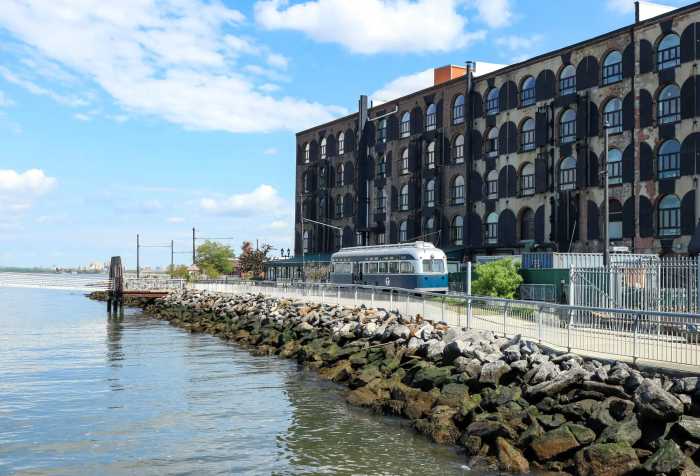Red Hook is going green, as cruise ships docking in the neighborhood will plug in to the mainland electric grid rather than puke out poisonous diesel fumes beginning next year, the city announced today.
The Brooklyn Cruise Ship Terminal on Pier 12 will be the first port on the East Coast to employ the technology, ending a half-decade struggle to halt the emission of toxins whenever the mammoth vessels are in port.
Officials expected to announce the agreement earlier this year, but the biggest sticking point was who would foot the sizable electric bill.
Carnival Cruise Lines agreed to retrofit its vessels to allow them to plug into the electrical grid, costing it $2 million for each of its ships, the massive Queen Mary 2 and Caribbean Princess, which use the port 40 times a year.
But the company was not prepared to foot the electric bill — taxpayers will have to chip in, too.
According to the New York Times, the five-year agreement calls for Carnival to split the bill with the Economic Development Corporation, the quasi-city agency that manages the cruise terminal, and the Public Service Commission, the state agency that negotiated the rate.
The Port Authority of New York and New Jersey, the cruise terminal’s landlord, will pay $12 million for the infrastructure at the port, and the Environmental Protection Agency has already committed to a $2.9-million grant.
Area officials were buoyant.
“This new protocol will keep bringing tourists and economic benefits to Brooklyn — and stop bringing air pollution and asthma,” said Councilman Brad Lander (D–Park Slope).
The ships berth for up to eleven hours, loading and unloading passengers and supplies — all the while idling their diesel-powered auxiliary engines. Connecting to the electric grid will result in the near elimination of 1,500 tons of carbon dioxide, 95 tons of nitrous oxide, and 6.5 tons of particulate matter annually, city officials said.
Residents said it’s about time that their ship has come in.
“It’s been disgusting that they are putting everyone’s health at risk,” said Danielle Jackson, a Pioneer Street resident. “To live without that fear is fantastic.”
A federal study concluded that sulfur dioxide and other pollutants produced by cruise ships damage lung tissue, causing reduce function, increased respiratory illness, and aggravated breathing problems.
And the Port Authority all but admitted that residents living near the terminal are taking a dangerous gamble.
Port Authority Executive Director Chris Ward told the Public Service Commission last year that residents near the port face “increased health risks.
The terminal, which opened in 2006, never was subjected to an environmental review because the waterfront is already an active port.

























